By the Recorder editorial staff
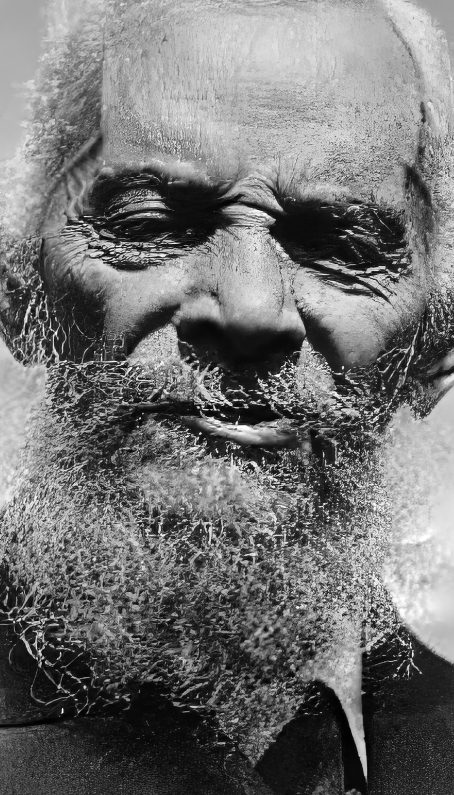
A significant “first”
While much of the early work among African Americans was obviously conducted in the South, the West can lay claim to some significant events.
When J.N. Loughborough was invited to hold meetings in Reno, Nevada, he could not have foreseen that he would have a role in changing the life of Charles M. Kinny, sometimes referred to as the father of Black Adventism.
Kinny was baptized in Reno in 1878. He had been born a slave in Richmond, Virginia, in 1855. He had gradually worked his way west, ending up in Reno. There he attended Loughborough’s evangelistic series and also heard Ellen G. White when she preached there. She wrote about the event: “We had an appointment to speak Tuesday evening in the tent in which Elder Loughborough was giving a course of lectures. I spoke with freedom to about four hundred attentive hearers, on the words of John: ‘Behold, what manner of love the Father hath bestowed upon us, that we should be called the sons of God’” (Ellen G. White, Testimonies for the Church, vol. 4, p. 296).
One of those 400 “attentive hearers” was Kinny. He became convinced of the truth and was baptized. Kinny was then sponsored by the Reno church to study at Healdsburg College (now Pacific Union College), and he became the first African American pastor to be ordained in the Adventist church. He worked initially in Kansas and then throughout the South, with great success.
Ellen White’s commitment
In 1891 Ellen White delivered a historic presentation entitled “Our Duty to the Colored People.” In this speech to 30 church leaders at the General Conference session, she laid out both a clear Biblical foundation and practice for the work among African Americans. The speech begins:
There has been much perplexity as to how our laborers in the south shall deal with the “color line.” It has been a question to some how far to concede to the prevailing prejudice against the colored people. The Lord has given us light concerning all such matters. There are principles laid down in His Word that should guide us in dealing with these perplexing questions. The Lord Jesus came to our world to save men and women of all nationalities. He died just as much for the colored people as for the white race. Jesus came to shed light over the whole world. At the beginning of His ministry He declared His mission: “The spirit of the Lord is upon me, because he hath anointed me to preach the gospel to the poor; he hath sent me to heal the brokenhearted, to preach deliverance to the captives, and recovering of sight to the blind, to set at liberty them that are bruised, to preach the acceptable year of the Lord” (Ellen G. White, The Southern Work, p. 9).
It was this conviction that led her son James Edson White to work in the South, aboard the Morning Star steamboat.
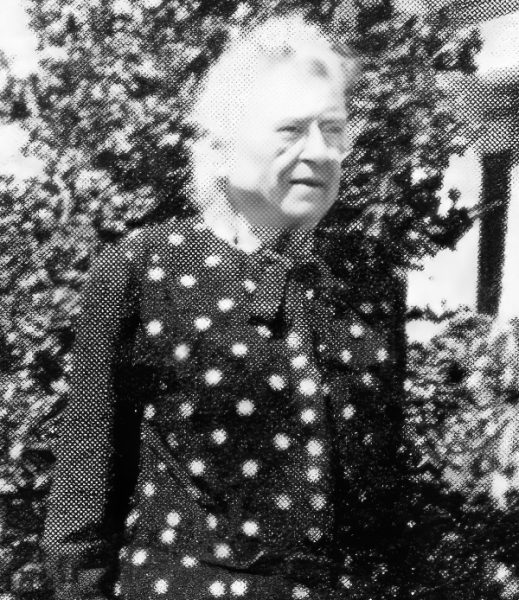
From Review and Herald, April 17, 1958.
First Black church in Los Angeles
This recognition of the importance of such work led to many churches being organized, including the first African American congregation in the West. The Furlong Track church organized in Los Angeles in 1908 with an initial membership of 23. This was the result of the work of Jennie Ireland, a nurse who had graduated from Battle Creek Sanitarium. She began doing medical missionary work among the African American population in Los Angeles. The first African American full-time employee was Amy Temple, a Bible instructor.
Continuing evangelism
In 1922 Owen Troy followed Jennie Ireland’s example of setting up clinics and arranging health and cooking classes and first-aid demonstrations. Coupled with in-depth Bible studies, Troy was an effective evangelist. He was also instrumental in establishing the Sweet Chariot Hour radio broadcast from Pasadena, California, in 1939.
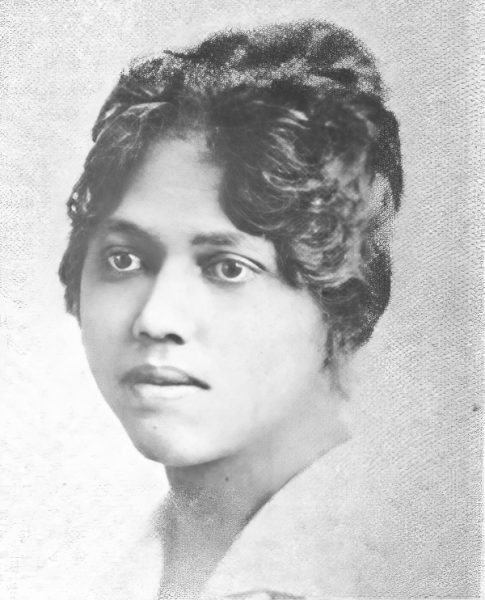
Blazers of California, 1919.
In 1923 P.G. Rodgers came to Los Angeles to take over the work started by Jennie Ireland. He began a significant ministry that involved pitching a tent on Central Avenue and holding a three-month series throughout the summer. (See story on pp. 8-13.) His ministry produced good results and the membership outgrew their Furlong church, necessitating a move to larger premises.
A founding member of the Furlong church was Ruth Temple, who moved to Los Angeles in 1902. Temple started studying at the College of Medical Evangelists (later Loma Linda University) in 1913. She was the first African American to graduate from the institution when she received her M.D. in 1918. She then began an internship in 1921 at the Los Angeles City Health Department, specializing in obstetrics and gynecology. In 1928 she and her husband, Otis Banks, turned their home into a free health clinic, serving the underprivileged in the area since there were no other clinics at that time. In 1948 Ruth was appointed director of the Division of Public Health for Los Angeles City, and she worked there in various capacities until her retirement.
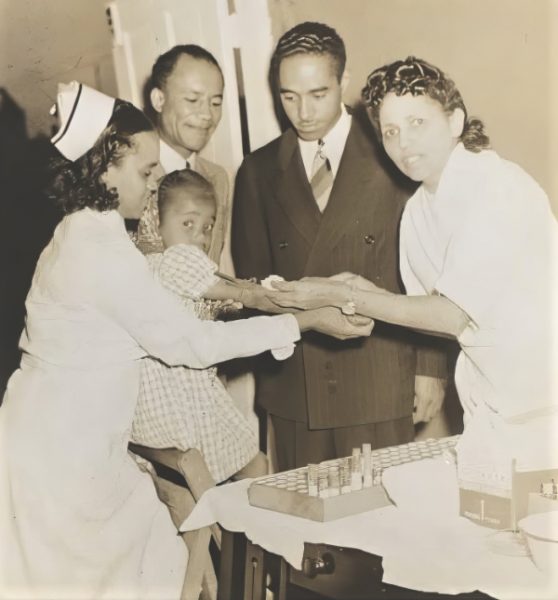
Photo courtesy of Dr. Carmelita Troy.
In the post-war years, when regional conferences were being developed elsewhere in the U.S., as Louis B. Reynolds writes, “The Pacific Union Conference and the local conferences that it comprises have exhibited a certain awareness of social change in the sixties and seventies and put forth some effort to keep pace. In 1945 and beyond, when regional conferences became a reality in the East and Midwest, the approximately 1,500 blacks and the sixteen conference workers who made up the regional department's constituency of Pacific Union Conference felt that the two major groups could work well together and that a certain posture of integration would take hold in the West.”1
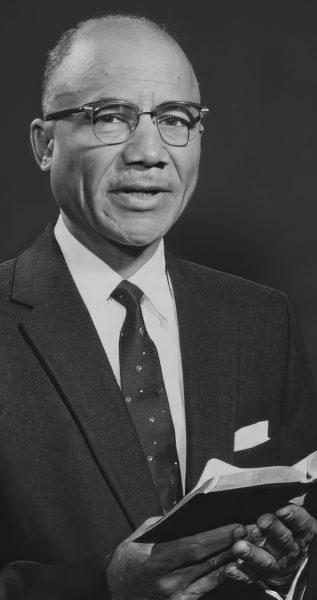
1. Louis B. Reynolds, We Have Tomorrow: The Story of American Seventh-day Adventists With an African Heritage (Washington, DC: Review and Herald Pub. Assn., 1984), p. 186.
Pioneros adventisas en el oeste Inicios: Ministerio de Negros
Por el personal editorial del Recorder
Una «primicia» significativa
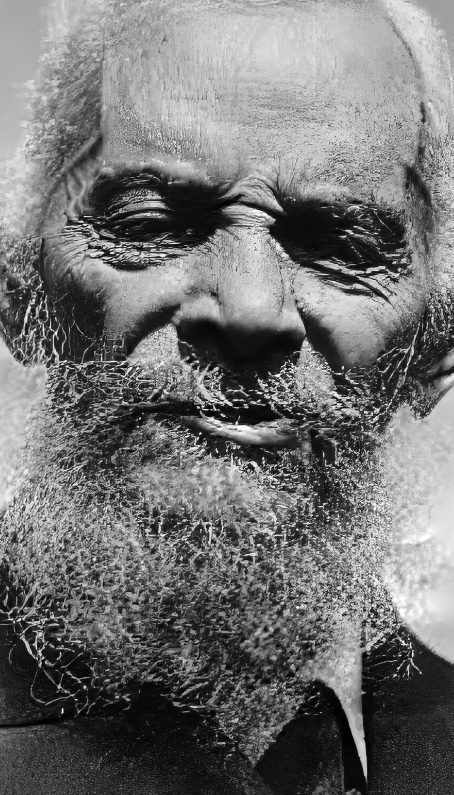
Si bien gran parte del trabajo inicial entre los afroamericanos se llevó a cabo obviamente en el sur, el oeste puede reclamar algunos eventos significativos.
Cuando J. N. Loughborough fue invitado a celebrar reuniones en Reno, Nevada, no podía haber previsto que tendría un papel en el cambio de la vida de Charles M. Kinny, a veces referido como el padre del adventismo negro.
Kinny se bautizó en Reno en 1878. Había nacido esclavo en Richmond, Virginia, en 1855. Poco a poco se había abierto camino hacia el oeste, terminando en Reno. Asistió a la serie evangelística de Loughborough y también escuchó a Ellen G. White cuando predicó ahí. Ella escribió acerca del evento: «Teníamos una cita para hablar el martes por la noche en la carpa en la que el pastor Loughborough estaba dando una serie de conferencias. Hablé con libertad a unos cuatrocientos atentos oyentes, sobre las palabras de Juan: “He aquí, qué amor nos ha dado el Padre, para que seamos llamados hijos de Dios”» (Ellen G. White, Testimonies for the Church, vol. 4, pág. 296).
Uno de esos 400 «atentos oyentes» era Kinny. Se convenció del mensaje adventista y se bautizó. Kinny fue patrocinado por la iglesia de Reno para estudiar en Healdsburg College (ahora Pacific Union College), y se convirtió en el primer pastor afroamericano en ser ordenado por la iglesia adventista. Trabajó inicialmente en Kansas y después en todo el sur, con gran éxito.
El compromiso de Ellen White
En 1891, Ellen White hizo una presentación histórica titulada «Nuestro deber hacia la gente de color». En ese sermón a 30 líderes de la iglesia en la sesión de la Conferencia General, expuso un fundamento bíblico claro y una práctica para el trabajo entre los afroamericanos. El sermón comienza:
Ha habido mucha perplejidad en cuanto a cómo nuestros obreros en el sur deben lidiar con la «línea de color». Algunos se han preguntado hasta qué punto ceder ante el prejuicio prevaleciente contra la gente de color. El Señor nos ha dado luz acerca de todos esos asuntos. Hay principios establecidos en su Palabra que deberían guiarnos al tratar con esas desconcertantes preguntas. El Señor Jesús vino a nuestro mundo para salvar a hombres y mujeres de todas las nacionalidades. Murió tanto por la gente de color como por la raza blanca. Jesús vino a iluminar al mundo entero. Al comienzo de su ministerio declaró su misión: «El espíritu del Señor está sobre mí, porque me ha ungido para predicar el evangelio a los pobres; me ha enviado a sanar a los quebrantados de corazón, a predicar liberación a los cautivos, y dar vista a los ciegos, a poner en libertad a los quebrantados, a predicar el año agradable del Señor» (Ellen G. White, The Southern Work, p. 9).
Fue esa convicción la que llevó a su hijo, James Edson White, a trabajar en el sur, a bordo del buque de vapor Morning Star.
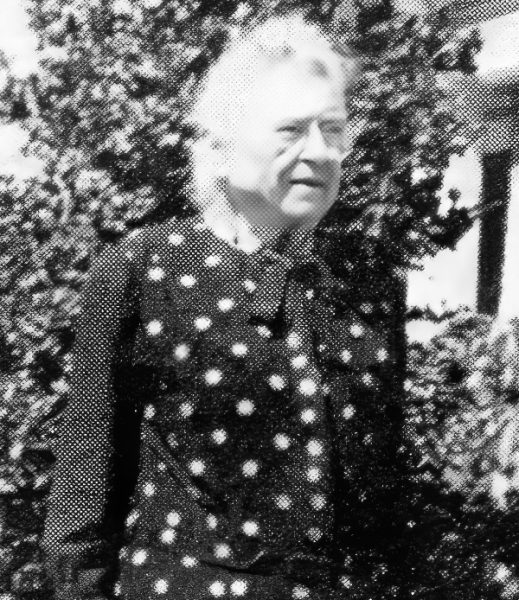
de la Review and Herald, 17 de abril 17, 1958.
Primera iglesia negra en Los Angeles
Ese reconocimiento de la importancia de tal trabajo llevó a que se organizasen muchas iglesias, incluyendo la primera congregación afroamericana en el oeste. La iglesia Furlong Track se organizó en Los Angeles en 1908 con una membresía inicial de 23 miembros. Ese fue el resultado del trabajo de Jennie Ireland, una enfermera que se había graduado en el Battle Creek Sanitarium. Comenzó a hacer trabajo médico misionero entre la población afroamericana en Los Angeles. La primera empleada afroamericana de tiempo completo fue la instructora bíblica Amy Temple.
Evangelismo continuo
En 1922, Owen Troy siguió el ejemplo de Jennie Ireland de establecer clínicas y organizar clases de salud y cocina y demostraciones de primeros auxilios. Además de dar estudios bíblicos Troy fue un evangelista eficaz. También jugó un papel decisivo en el establecimiento de la transmisión de radio Sweet Chariot Hour desde Pasadena, California, en 1939.
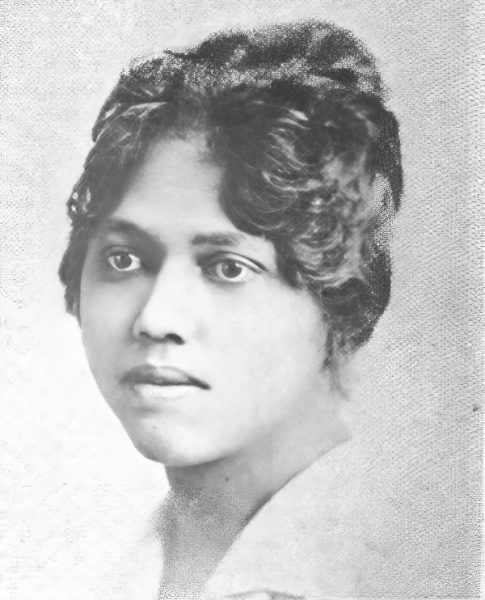
Blazers of California, 1919.
En 1923, P. G. Rodgers llegó a Los Angeles para hacerse cargo del trabajo iniciado por Jennie Ireland. Comenzó un ministerio significativo que involucró alzar una carpa en la Central Avenue y celebrar una serie de tres meses durante todo el verano. (Ver el artículo en las págs. 8-13.) Su ministerio produjo buenos resultados y la membresía fue muy grande para la iglesia de Furlong, lo que requirió un traslado a un local más grande.
Una miembro fundadora de la iglesia de Furlong fue Ruth Temple, quien se mudó a Los Angeles en 1902. Temple comenzó a estudiar en el College of Medical Evangelists (ahora Loma Linda University) en 1913. Fue la primera afroamericana en graduarse de la institución cuando recibió su doctorado en medicina en 1918. Luego comenzó una pasantía en 1921 en el Departamento de Salud de la Ciudad de Los Angeles, especializándose en obstetricia y ginecología. En 1928, ella y su esposo, Otis Banks, convirtieron su hogar en una clínica de salud gratuita, sirviendo a los desfavorecidos de la zona, ya que no había otras clínicas en ese momento. En 1948 Ruth fue nombrada directora de la División de Salud Pública de la ciudad de Los Angeles y trabajó allí en varias funciones hasta su jubilación.
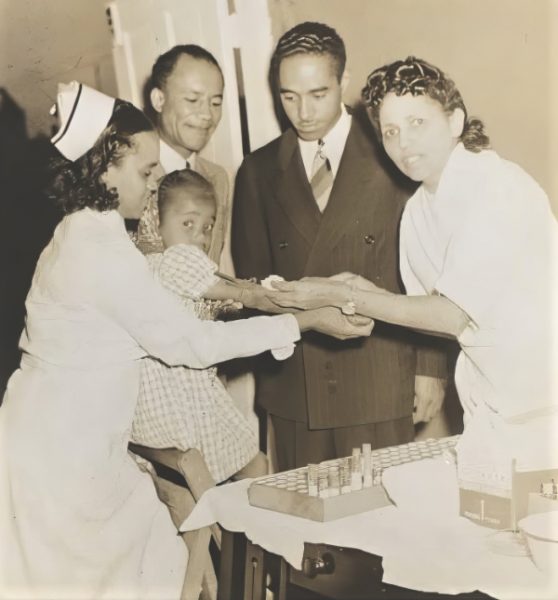
Foto courtesía de la Dra. Carmelita Troy.
En los años de la posguerra, cuando las conferencias regionales se estaban desarrollando en otras partes de los Estados Unidos, como escribe Louis B. Reynolds, «la Pacific Union Conference y las conferencias que la componen han mostrado cierta consciencia del cambio social en los años sesenta y setenta y se han esforzado por mantener el ritmo. En 1945 y después, cuando las conferencias regionales se hicieron realidad en el este y el medio oeste, los aproximadamente 1.500 negros y los dieciséis trabajadores de la conferencia que componían la membresía del departamento regional de la Pacific Union Conference consideraron que los dos grupos principales podrían trabajar bien juntos y que una cierta postura de integración se afianzaría en el oeste».1
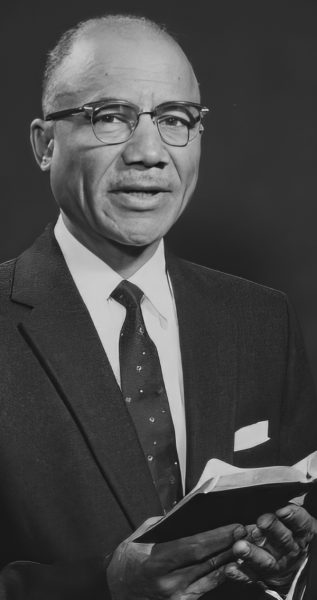
1 Louis B. Reynolds, We Have Tomorrow: The Story of American Seventh-day Adventists With an African Heritage (Washington, DC: Review and Herald Pub. Assn., 1984), p. 186.






